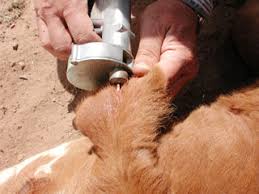Source: Sandy Stuttgen, DVM
GROWTH IMPLANTS:
Since the 1950s, the Food and Drug Administration has approved several steroid hormone implants for use in growing and finishing beef cattle in all production phases, from nursing calves through the finishing phase. All are safe to use, and none have a withdrawal time prior to harvest. The implant products are labeled for sex, age or stage of production. Until recently, the implant labels did not include directions for reimplantation within the production stage for which they are intended.
In a May 28, 2021, letter to the industry, the FDA stated: “There are no changes to how [implants] may be used at this time. … Over-the-counter implants will remain available for the beef cattle industry. These products have a variety of approved conditions of use, and the FDA has recognized that the labeling for certain products may be unclear to the end user, regarding repeat implantation. To address this issue, the FDA has initiated a process to work with the drug sponsors to clarify the labeling of the affected beef cattle ear implant products.”
FDA set June 2023 as the target date for those making ear implants to update their labels regarding reimplantation within a production phase.
Some producers had been using a sequential implanting program during a production phase (typically the finishing phase). Research indicated doing so improved daily gains economically when compared to using only one implant or not implanting at all. However, the labels were not changed to reflect those research implications.
Target date June 11
Effective June 11, unless using a product labeled for reimplantation, only one implant may be used per production phase. Beef cattle will still be allowed to receive multiple implants across different production phases when using those implants approved for each specific phase. Regarding heifers and bulls not intended for breeding purposes, FDA outlines the four beef cattle production subclasses when implants may be used as:
- Pre-ruminant or ruminant beef calves nursing their dams from birth until weaning
- Growing beef steers or heifers on pasture (stocker, feeder or slaughter) — weaned and maintained on pasture and receiving most of their diet from grazing
- Growing beef steers or heifers in a drylot — weaned and maintained in a dry lot and fed harvested forage (possibly with supplement)
- Growing beef steers or heifers fed in confinement for slaughter — weaned growing and finishing animals confined in group pens or grow yards and fed progressively high-energy diet ad libitum as their sole ration until slaughter
Carefully read the label of the implant product you intend to use during each production phase. If the label does not state how reimplantation of the product may be accomplished, then only use it once during that production phase.
As Bill Halfman, Extension Beef Outreach, says: “Moving forward, some producers who use implants will need to make some changes to their implant programs. It is important to remember that having a functioning implant in the animal during the last days on feed is the one that will have the greatest return on investment. So, producers will need to take into consideration the approximate sale date of the cattle and the duration of the implant they intend to use to identify the best time to administer them.”
Stuttgen is a veterinarian, senior outreach specialist and Taylor County Extension agriculture educator. This column is provided by the University of Wisconsin Extension’s Wisconsin Beef Information Center.














